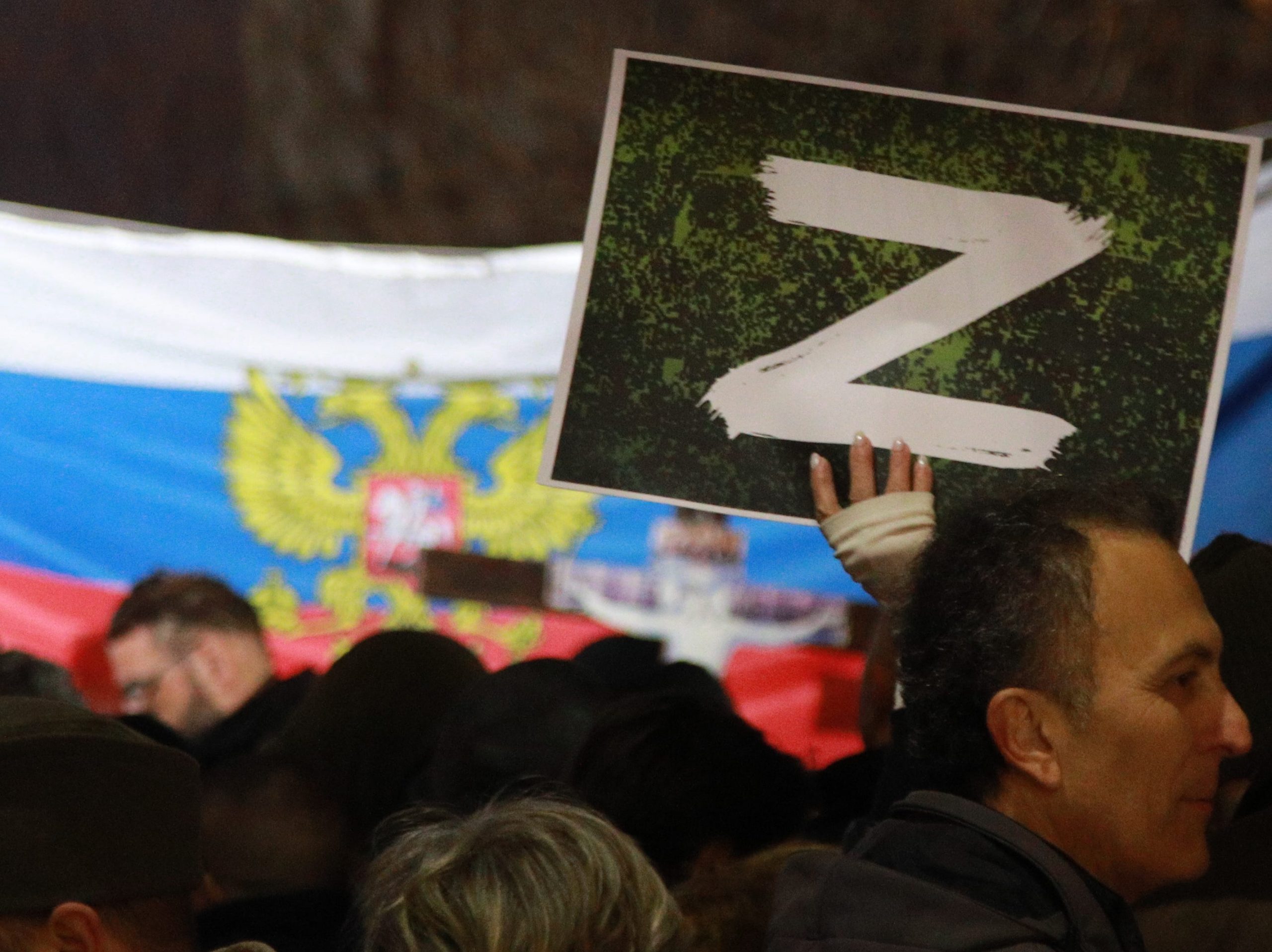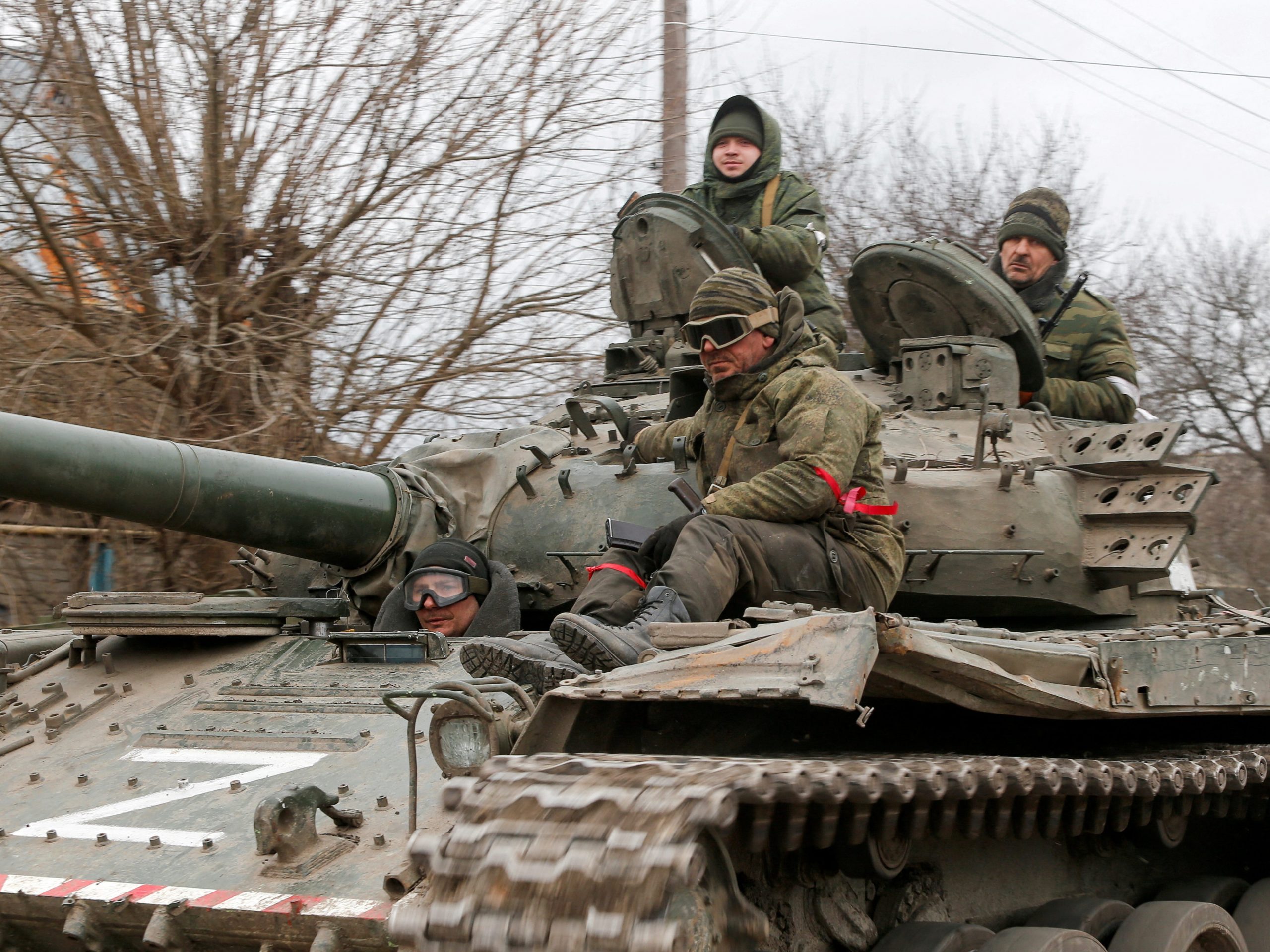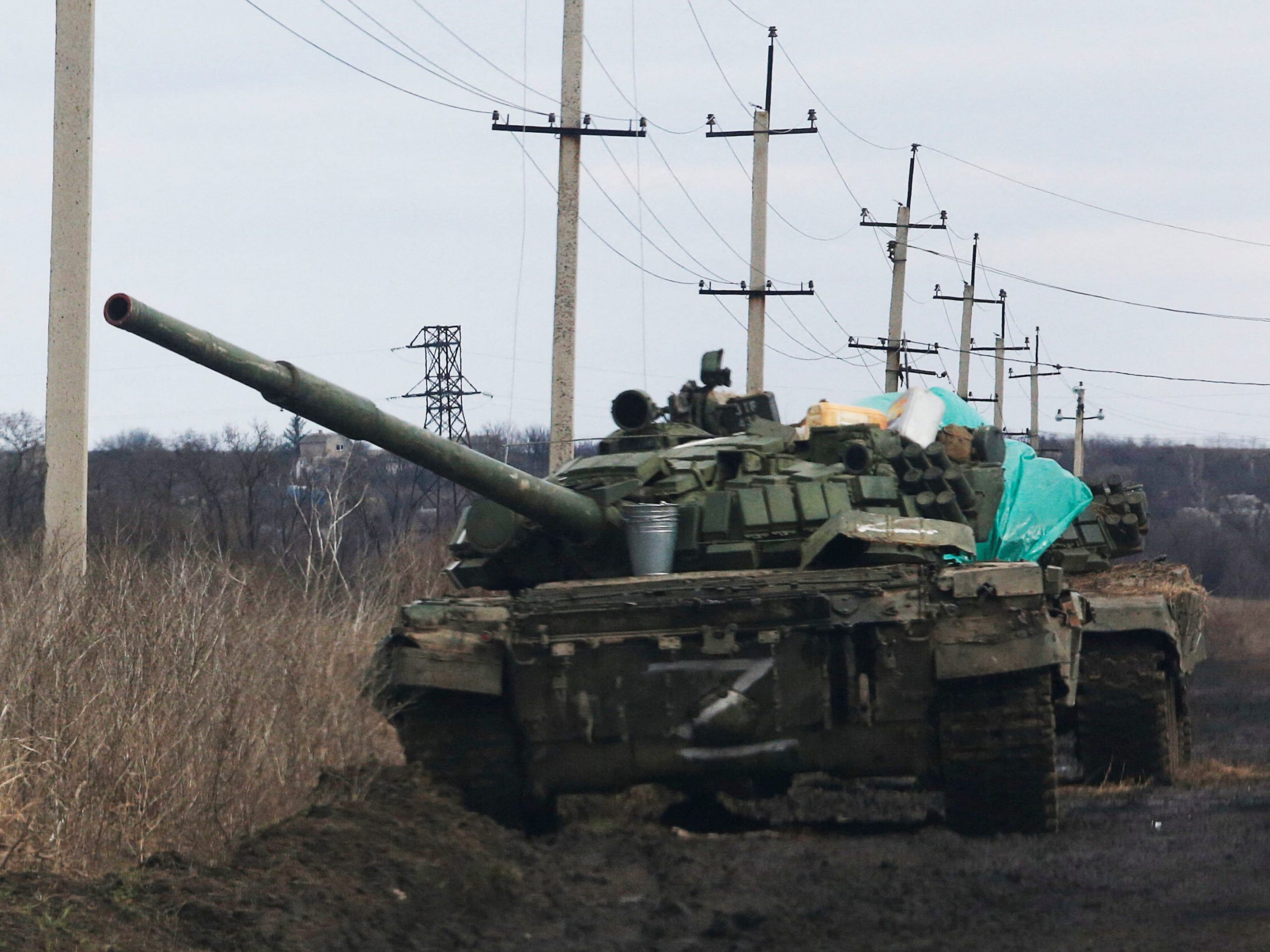
- A new emblem has surfaced in the Ukraine-Russia conflict: a "Z," stylized in a thick brushstroke.
- The "Z" was spotted on Russian tanks invading Ukraine and painted on the sides of military vehicles.
- It may have started off as a Russian signal for victory, but has been appropriated as a symbol of the far-right.
A new symbol of Russia's war against Ukraine has emerged — a white "Z" emblem, stylized in a thick brushstroke. It has found its way onto the signs and t-shirts of ultra-right, pro-Russian protesters, been painted on Russian tanks and military vehicles, and been worn as a show of support for Russia's invasion.
In the past several weeks, the "Z" has gone from a military marking to a potent symbol of support for Russia's invasion of Ukraine. And there are signs that Russian nationalist groups have co-opted the mark as well.
The emblem was first spotted on Russian tanks in February

The "Z" symbol was first spotted on February 22, emblazoned on Russian military vehicles rolling into Ukraine's Donetsk region.
Twitter commenters speculated that the "Z" symbols, which appeared on tanks framed by squares, triangles, and other painted shapes, could be a way to delineate infantries.
Kamil Galeev, a former Galina Starovoitova Fellow on Human Rights and Conflict Resolution at the policy think tank the Wilson Center, tweeted that some interpreted the "Z" as short for "za pobedy" — the Russian term for "victory." Others have guessed the "Z" is short for "zapad" (or west) and is meant to designate west-bound infantry.
—Kamil Galeev (@kamilkazani) March 6, 2022
The meaning of the symbol has yet to be confirmed by Russian military sources.
A symbol of Russian nationalism and a rallying cry in support of Putin

Despite the letter "Z" not being in the Cyrillic Russian alphabet, the letter appears to have woven itself into the broader Russian wartime narrative.
Cars were spotted around Russia emblazoned with the "Z" logo, and businesses have also co-opted the symbol.
—Kamil Galeev (@kamilkazani) March 6, 2022
On March 4, a crowd of pro-Russian far-right Serbian protesters marching in Belgrade waved signs decorated with the "Z."
—Samuel Ramani (@SamRamani2) March 6, 2022
Similarly, a group of Russian nationalist protesters in Leningrad were filmed wearing hoodies emblazoned with a white "Z" along with the words "We don't give up our own." It is unclear when the video was taken, but it surfaced on social media in the first week of March.
The slogan echoed false Russian propagandist claims that the invasion is meant to "liberate" and "de-Nazify" Ukraine — an independently-governed democracy led by a Jewish president.
On Sunday, a Russian gymnast appeared at a medal ceremony with a "Z" taped to his uniform
Russian gymnast Ivan Kuliak taped a "Z" symbol on the front of his uniform while accepting a medal at the gymnastics World Cup in Doha on Sunday. He came in third, behind Ukraine's Illia Kovtun, who came in first.
—Denis Kazakiewicz (@Den_2042) March 6, 2022
The International Gymnastics Federation has called on the Gymnastics Ethics Foundation to investigate Kuliak's actions.
Pro-Putin figures also donned the symbol. Maria Butina, a convicted Russian spy and current member of the Russian State Duma, was seen in a video removing her blazer and drawing a "Z" on her lapel.
—Francis Scarr (@francska1) March 3, 2022
Insider's live blog of the Russian invasion is covering developments as they happen.
